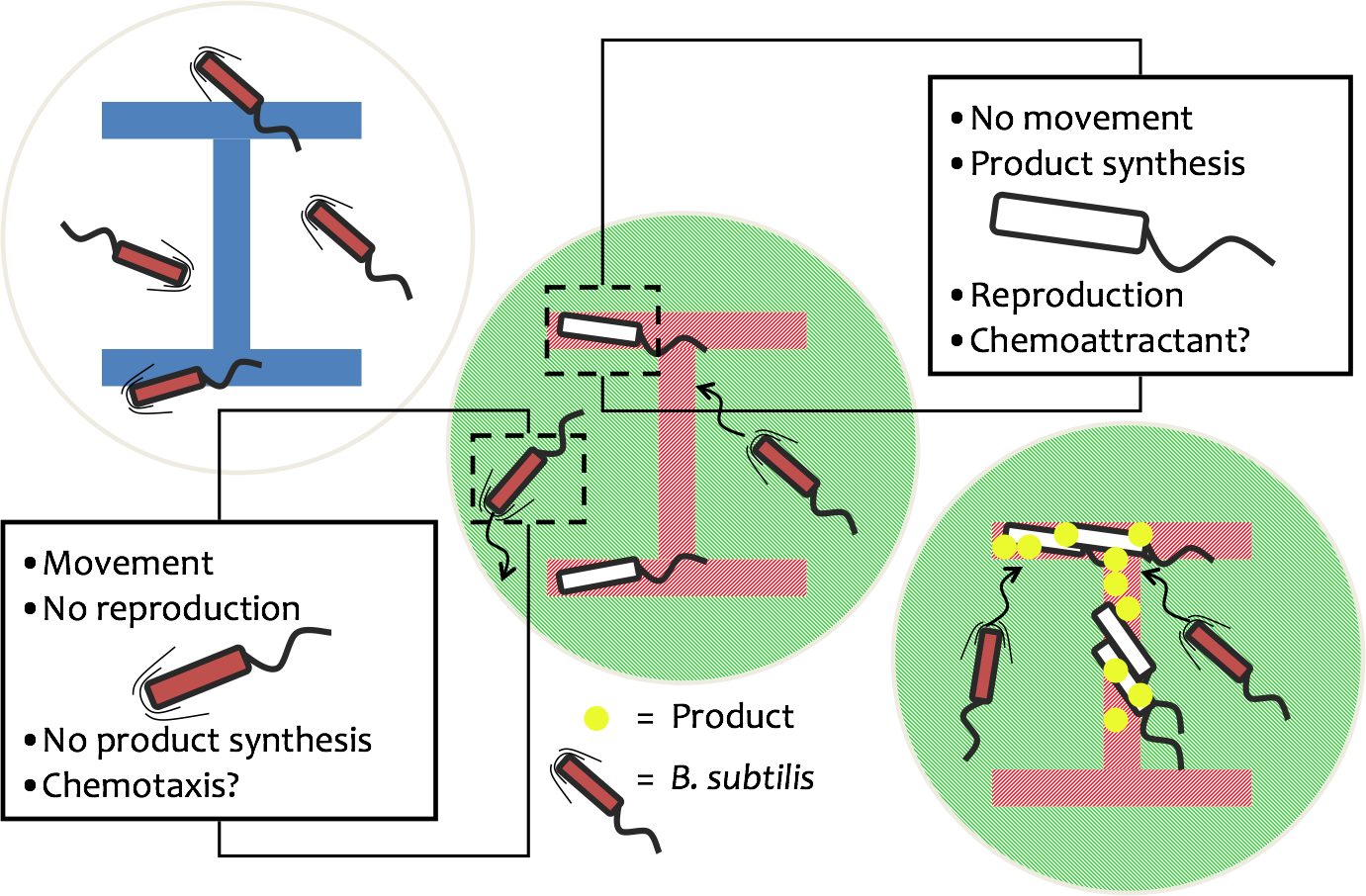Team:Imperial College
From 2008.igem.org
m |
m |
||
| Line 1: | Line 1: | ||
{{Imperial/StartPage2}} | {{Imperial/StartPage2}} | ||
| - | + | <br> | |
| - | + | <br> | |
| - | + | {| cellpadding="1" style="background:#2B48B3; border:4px solid #99BBFF; color:#E5EBFF" align="center" width=90% | |
| - | [[Image: | + | |<center>Welcome to the Imperial 2008 iGEM project page. It's {{CURRENTDAYNAME}}, {{CURRENTMONTHNAME}} {{CURRENTDAY}} and a great day to read about an awesome iGEM project!</center> |
| - | + | |} | |
| - | + | <br> | |
| + | {{Imperial/Box1||[[Image:ImperialLogo08.png|350px|center]] | ||
| + | <br> | ||
| + | For the 2008 iGEM competition, the Imperial College Team aims to develop a genetically-engineered Biofabricator, using the Gram-positive bacterium Bacillus subtilis as our chassis. Our Biofabricator aims to produce self-assembling biomaterials in specified 3D shapes, using light as the trigger. | ||
| + | <br><br> | ||
| + | This is achieved in three stages. First by utilising an endogenous light-sensing mechanism, the bacteria is captured in the desired location using 3D holography. Next bacterial locomotion is suspended in the region of interest using a recently-discovered clutch mechanism. This involves disengaging the flagellum from the motor protein. Finally, when our bacteria are stationary in the correct location, the biomaterial production is triggered. These biomaterials can self-assemble to form a 3D bio-scaffold. Applications of our Biofabricator range from regenerative tissue engineering to Bio-Couture. | ||
| + | <br><br> | ||
| + | [[Image:Imperial_2008_Bioprinter_Cartoon.png |center|600px| Overview of our planned system]] | ||
| + | [[Image:Imperial_2008_Basic_Circuit.jpg |center|450px |Basic Circuit Diagram]] | ||
| + | <br><br> | ||
| + | Please continue on to our project pages - you may want to start with our [[IGEM:IMPERIAL/2008/New/Project| '''>>> Project Specifications >>>''']]}} | ||
<hr> | <hr> | ||
| - | + | {{Imperial/Box1|| | |
| - | + | The Imperial College Team 2008 has received sponsorship from a number of generous companies. We are grateful for their kind support. | |
| - | + | ||
| - | + | ||
| - | + | ||
| - | + | ||
| - | | | + | |
| - | + | ||
| - | + | ||
| - | + | ||
| - | + | ||
| - | + | ||
| - | + | ||
| - | + | ||
| - | + | ||
| - | + | ||
| - | + | ||
| - | + | ||
| - | + | ||
| - | + | ||
| - | + | ||
| - | + | ||
| - | + | ||
| - | + | ||
<html><center><a href=http://www.bio-rad.com/><img src=http://i59.photobucket.com/albums/g305/Timpski/BioRad.png></a><a href=http://www.fisher.co.uk/><img height=50px src=http://i59.photobucket.com/albums/g305/Timpski/FisherScientific.jpg></a><a href=http://www.geneart.com/><img src=http://i59.photobucket.com/albums/g305/Timpski/GeneArt.gif></a><a href=http://www.vwr.com/index.htm><img height=50px src=http://i59.photobucket.com/albums/g305/Timpski/VWR.jpg></a></center></html> | <html><center><a href=http://www.bio-rad.com/><img src=http://i59.photobucket.com/albums/g305/Timpski/BioRad.png></a><a href=http://www.fisher.co.uk/><img height=50px src=http://i59.photobucket.com/albums/g305/Timpski/FisherScientific.jpg></a><a href=http://www.geneart.com/><img src=http://i59.photobucket.com/albums/g305/Timpski/GeneArt.gif></a><a href=http://www.vwr.com/index.htm><img height=50px src=http://i59.photobucket.com/albums/g305/Timpski/VWR.jpg></a></center></html> | ||
| + | }} | ||
| - | + | {{Imperial/EndPage|Home|Project}} | |
| - | {{Imperial/EndPage}} | + | |
Revision as of 16:35, 7 October 2008
|
||||||||||||
 "
"







